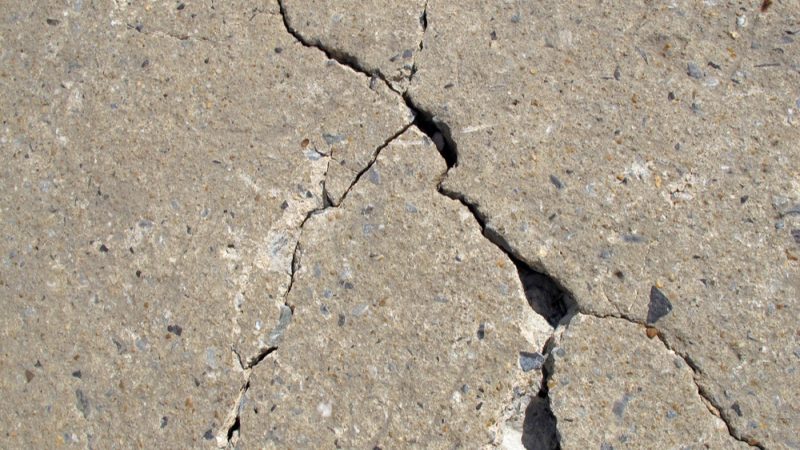The Innovations Of Civil Engineering In Self-Healing Concrete Technology

Concrete is one of the most widely used construction materials in the world. It is durable, strong and can withstand a lot of wear and tear. However, despite its many benefits, it does have one major drawback – it cracks easily.
Cracks in concrete can lead to structural problems, water damage and other issues that can be costly and time-consuming to repair. That’s where self-healing concrete comes in.
Introduction
Self-healing concrete is a revolutionary new building material that has the ability to repair cracks in the material on its own. It is made by incorporating capsules or fibers containing healing agents into the concrete mix. When cracks form in the concrete, the capsules or fibers are activated, releasing the healing agent and repairing the cracks.
This technology has the potential to revolutionize the construction industry by providing a cost-effective solution to a common problem. In this article, we’ll take a closer look at how self-healing concrete works, its benefits and drawbacks, and answer some frequently asked questions about this exciting new technology.
How Self-Healing Concrete Works
Self-healing concrete works by incorporating healing agents into the concrete mix. There are two main types of self-healing concrete: capsule-based and fiber-based.
Capsule-based self-healing concrete contains tiny capsules of a healing agent, such as polymers, bacteria or vegetable oil. When a crack forms in the concrete, the capsules rupture, releasing the healing agent into the crack. The healing agent then bonds with the surrounding concrete and fills the crack, repairing the damage.
Fiber-based self-healing concrete works by incorporating fibers into the concrete mix that react to cracking by swelling and creating a barrier against further damage. The fibers are made from materials such as microfibers, shape-memory polymers or carbon fibers. When a crack forms, the fibers swell and create a seal, preventing water or other materials from entering the crack and causing further damage.
Benefits and Drawbacks of Self-Healing Concrete
The benefits of self-healing concrete are clear – it reduces the need for costly repairs, extends the lifespan of concrete structures and lowers maintenance costs. In addition, it is an environmentally friendly solution because it reduces the amount of waste generated and requires less energy to produce than traditional concrete.
However, there are some drawbacks to self-healing concrete. Firstly, it is more expensive than traditional concrete. Secondly, the healing process may not work if the damage is too severe. Lastly, the capsules or fibers may affect the structural properties of the concrete. Despite these drawbacks, self-healing concrete is an exciting new development in the construction industry and has a lot of potential.
FAQ
1. How effective is self-healing concrete?
The effectiveness of self-healing concrete depends on the type and severity of the damage. Testing has shown that the technology is effective for repairing small cracks, but may not be able to repair larger cracks or structural damage.
2. Is self-healing concrete more expensive than traditional concrete?
Yes, self-healing concrete is more expensive than traditional concrete due to the added cost of incorporating the healing agents.
3. How long does it take for self-healing concrete to repair a crack?
The time it takes for self-healing concrete to repair a crack depends on the type and severity of the damage, as well as the type of healing agent used. In some cases, the healing process can take just a few hours, while in other cases it may take several days.
4. What types of healing agents are used in self-healing concrete?
The most common types of healing agents used in self-healing concrete include polymers, bacteria and vegetable oil. Other materials such as microfibers, shape-memory polymers or carbon fibers may also be used.
5. Can self-healing concrete be used in all types of construction?
Yes, self-healing concrete can be used in all types of construction, from residential to commercial and industrial buildings.
6. Is self-healing concrete safe for the environment?
Yes, self-healing concrete is safe for the environment. It reduces the amount of waste generated and requires less energy to produce than traditional concrete.
7. How does self-healing concrete impact the structural properties of the material?
The impact of self-healing concrete on the structural properties of the material depends on the type and amount of healing agents used. Some healing agents may have a negative impact on the strength of the concrete, while others may have a positive impact by reinforcing the material.
Conclusion
Self-healing concrete is an exciting new development in the construction industry that has the potential to revolutionize the way we build. By providing a cost-effective and environmentally friendly solution to a common problem, it has the potential to save builders and property owners thousands of dollars in repair costs and extend the lifespan of concrete structures. While there are some drawbacks to the technology, it is clear that self-healing concrete has a lot of potential and will continue to be an area of interest for research and development in the industry.


Post a Comment for "The Innovations Of Civil Engineering In Self-Healing Concrete Technology"